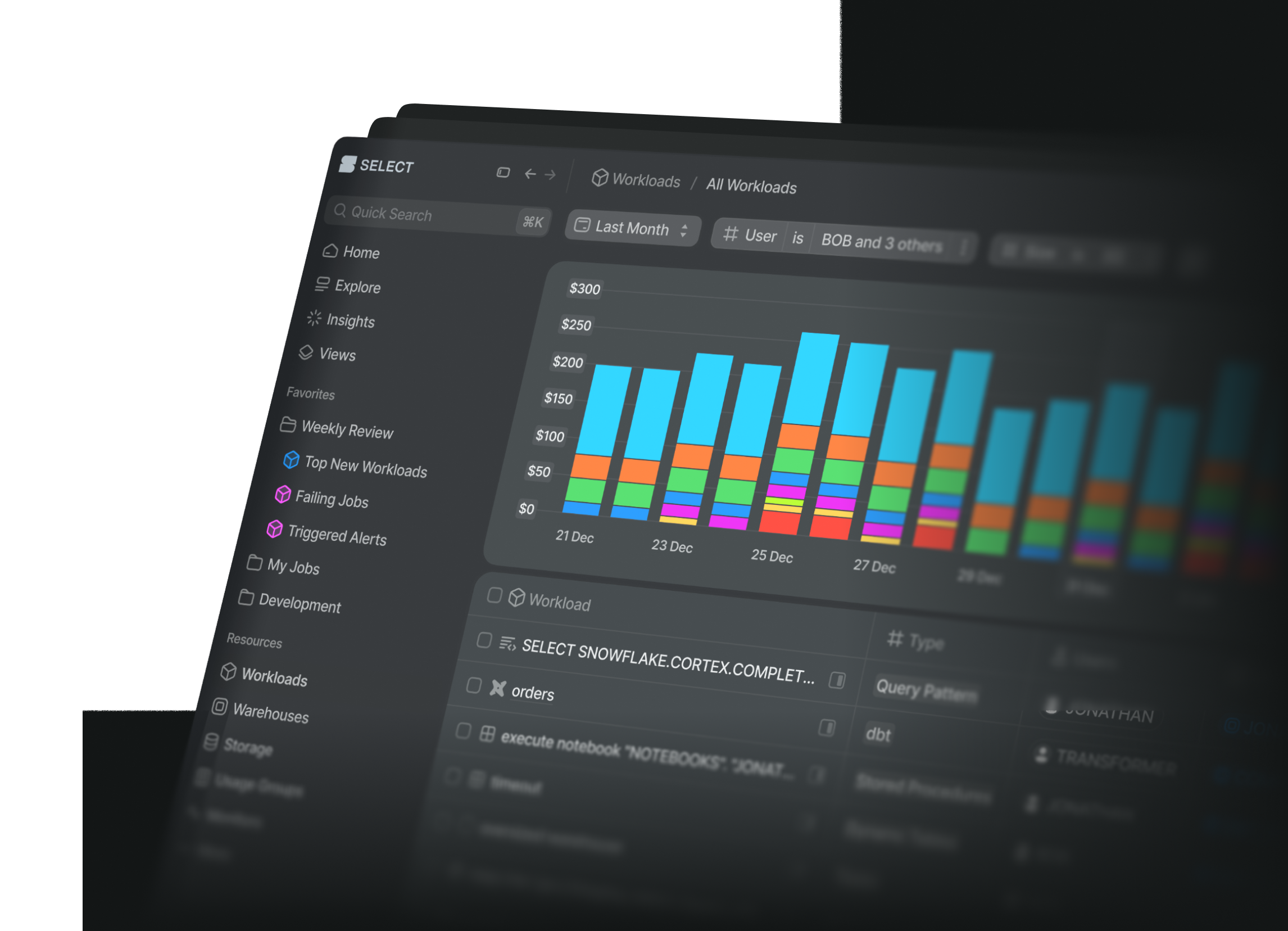
Exclude and rename columns when using SELECT * in Snowflake
Ian WhitestoneSunday, December 18, 2022
Why do we need EXCLUDE & RENAME?
In Snowflake's November 2022 release, they quietly announced some exciting new SQL syntax, EXCLUDE and RENAME, which allows users to remove and rename specific columns when running a SELECT style query. This is particularly exciting, since it is very common when operating in non-production SQL workflows to run `SELECT ` style exploratory queries like:
Users often do this in order to investigate a particular record or subset of records. But what happens when you want to exclude a specific column (like a large text column), or rename one of them? Users are forced to type out all of the columns they want, along with any desired renaming using the traditional AS syntax:
Not the best when you're trying to get answers, quickly.
How to exclude columns when running a SELECT * SQL statement in Snowflake?
Instead of typing out each column, a common ask
1 from users is the ability to specify a subset of columns to exclude from the table. In many cases, this is much more efficient to write since the number of columns to be excluded is often much lower than the number to be included. As of Snowflake's version 6.37 release, you can now include an EXCLUDE clause in SELECT * style SQL queries where you specify one or more columns that you don't want returned from the table:
This can also be used to exclude a single column:
Brackets are optional when excluding a single column. The SQL above can be rewritten as:
Using Snowflake's EXCLUDE with multiple tables
Another common need for excluding columns is when joining multiple tables. Imagine you have a query like this 2:
In this example, we have two order_id columns and two customer_id columns in the output, since they are present in multiple tables. We can easily exclude these by changing our SQL to:
Snowflake's equivalent of BigQuery's & Databrick's EXCEPT
Snowflake's EXCLUDE syntax is similar to BigQuery's and Databrick'sEXCEPT syntax:
For anyone familiar with DuckDB, Snowflake follows the same EXCLUDE syntax that they use. Both databases presumably chose to avoid using the EXCEPT keyword to provide this functionality, since it is already used in set operations.
Should you use EXCLUDE in production SQL code?
While this new syntax is great for speeding up adhoc workflows, it is not recommended for production SQL code. It's better to be explicit about the exact columns you are selecting. Writing out all column names improves readability and auditability. Users reading your SQL code can immediately understand which columns you are using from which table. It can also lead to clearer errors. If a column is suddenly removed from a table, your SQL code will immediately fail. This is much better than a downstream application suddenly erroring due to a missing column.
Does using EXCLUDE in Snowflake result in a different query plan or performance?
No. Using the EXCLUDE keyword to remove a few columns does not result in a different query plan or query performance compared to explicitly writing out all columns. You can validate this behaviour by running both types of queries on a dataset in your Snowflake account and inspecting the query profile for each query.
How to rename columns when running a SELECT * SQL statement in Snowflake?
Prior to the new RENAME functionality, users were forced to write out every column name as soon as they needed to rename at least one when running a SELECT * query. Now, users can easily select all columns while renaming a subset:
This is much better than having to list out every field just to rename one or two:
Similar to EXCLUDE, this can also be done for a single column, brackets optional:
Combining EXCLUDE and RENAME
EXCLUDE and RENAME can easily be combined, as shown in the example below:
Much better than the code from the beginning of the blog post:
Notes
1To give you a sense of demand, this stack overflow question, asked almost 14 years ago, has 1.3 million views and over 1000 upvotes ↩
2Shoutout to Nate Sooter for motivating this example with his recent tweet! ↩

Ian is the Co-founder & CEO of SELECT, a SaaS Snowflake cost management and optimization platform. Prior to starting SELECT, Ian spent 6 years leading full stack data science & engineering teams at Shopify and Capital One. At Shopify, Ian led the efforts to optimize their data warehouse and increase cost observability.
Want to hear about our latest Snowflake learnings?Subscribe to get notified.
Get up and running in less than 15 minutes
Connect your Snowflake account and instantly understand your savings potential.


